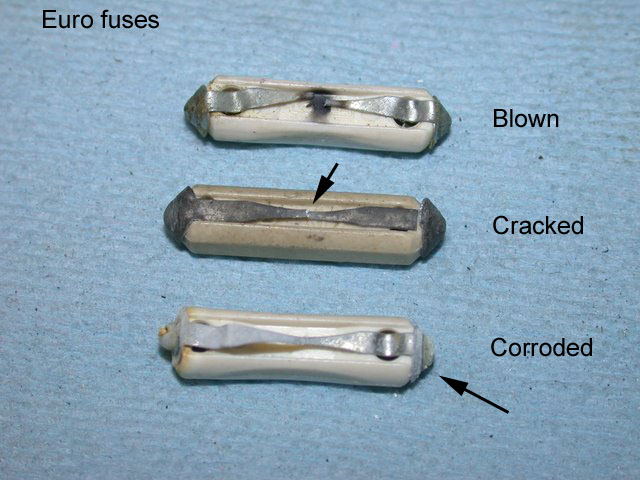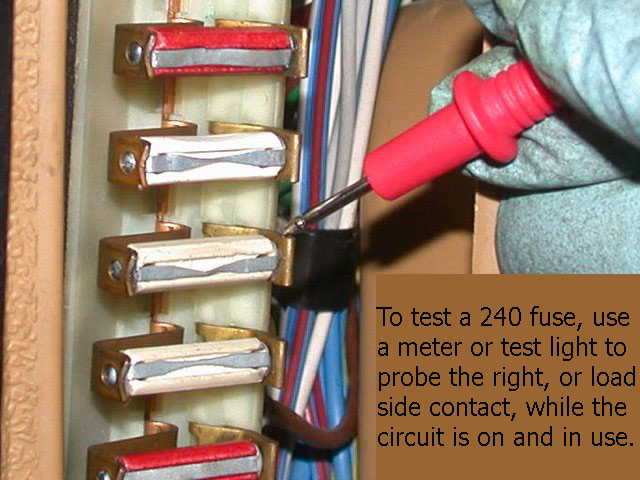|
Certainly it could have been the contacts in the ignition switch. However, the fuse is the place to start, and electrics sometimes refuse to be visually diagnosed.
"Ended up being a very difficult to see broken fuse."
The fuse at the top of this picture is the only one a reasonably well-sighted person could call out visually.

The one in the center is what I think you found. It is work-hardened when it expands and contracts passing an appreciable amount of its rated current in the circuit, on and off. The brake light fuse is often cracked like this. As you can imagine, the broken ends will touch sometimes, making the problem come and go.
If the crack was at the end, that might have occurred by handling.
The one at the bottom is typical with the corrosion at the ends due to moisture and dissimilar metal. All 240 owners learn to roll the fuse to temporarily regain the connection, I think.
And these fuses, really, should be done away with, and replaced by brass or copper fuses, readily available today.
But to diagnose visually is hit or miss. The only true way to test a fuse...

If the ignition switch were faulty, and you were catching it being faulty, your probe would not find battery voltage on the left side contact brass either.
--
Art Benstein near Baltimore
A man walks into a bar with a slab of asphalt under his arm and says: "A beer please, and one for the road."
|



